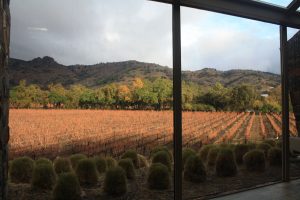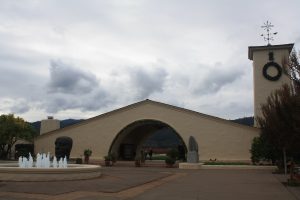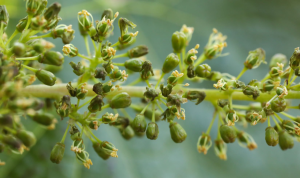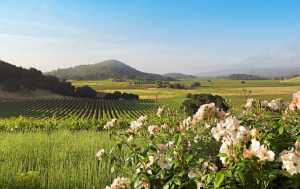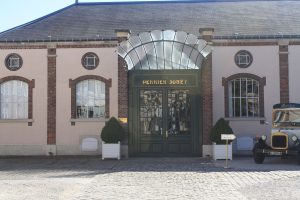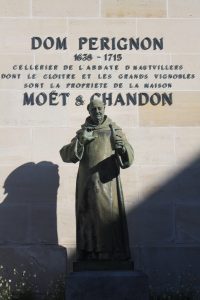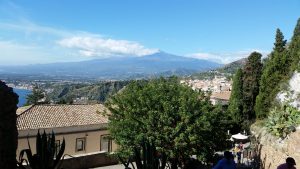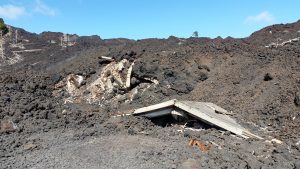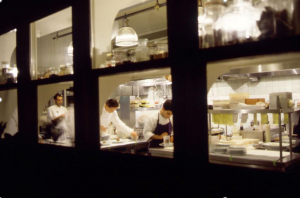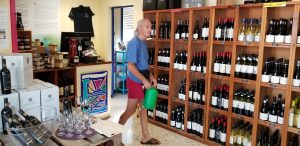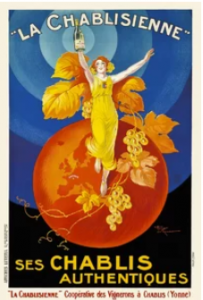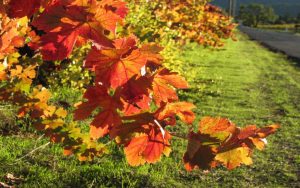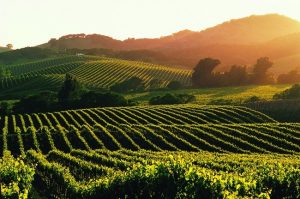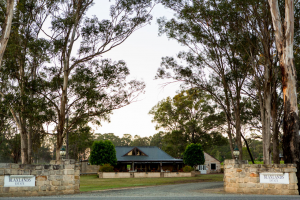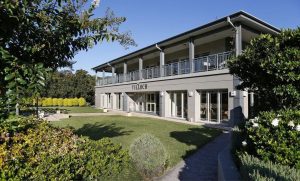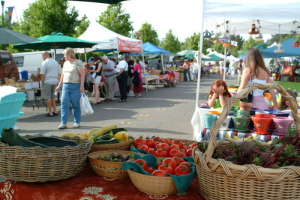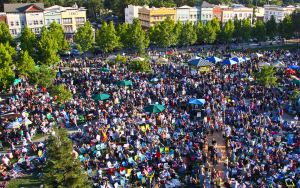When you think of Napa Valley or when you see pictures of it, the skies are always blue and the sun is always shining. One of the beauties of California is the great weather, but that’s not always the case. Mornings in Napa Valley are often foggy and a bit chilly. There are rainy days in the vineyards, too, or there wouldn’t be any grapes from which to make wine.
For sure, it’s a bit disappointing to go on a wine tasting trip when the weather is poor. We have been in Napa Valley when the temperature was in the 20s, when there were floods and when rain came down in buckets. It wasn’t what we were hoping for but it was what we got. And there were some advantages.
The view from Stag’s Leap Wine Cellars’ windows, when the sun pierced the clouds for a few minutes.
For one thing, there is a gloomy beauty in seeing the vineyards shrouded in mist. There is always the chance that the sun will poke through if only for a few minutes. The vines (even without leaves and grapes) are quite dramatic against grey skies.
The great advantage, though, is that fewer people go wine tasting on cold, rainy days. So a nasty Thursday in December, for example, has its own charms. There are fewer people in the tasting rooms and you get more attention from the servers. Often you get more wine as well. After all, the servers have nothing to do except wait for visitors. When you show up, they’re happy to see you and maybe pour a smidgen more of this and open a bottle of that. As always, you need to be polite and inquisitive; servers have no more interest in jerks on rainy days than on sunny ones. But when there are fewer people around, the servers may think, “Well, that bottle of the 1998 Cab is open anyway so why not give it to these nice people who braved the weather to come to our winery”.
The Robert Mondavi winery.
Perhaps even more important is that if you are served by a true wine educator, you will have so much more of an experience. Sure, anyone can tell you the grapes and the vintages – they’re written on the bottle. But a server who knows a thing or two will explain about the growing conditions that year, how one vintage stacks up against the others or about the different vineyards where the grapes were sourced. If you’re not interested in those sorts of things, it’s quite probable that you won’t be make the trip to Napa Valley in the rain anyway.
Likewise, other visitors whom you do meet in a tasting room are likely to be as interested (and interesting) as you are. Vivid conversations and shared observations tend to come to like-minded people.
In lousy weather, the roads are less crowded. There are more tables available at the better restaurants, even without reservations. And if you like hearty cooking, there’s a better chance you’ll find roasts and stews on the menus at these times. Save your California cuisine fol-de-rol for sunny summer days; you’ll get real meals when the thermometer drops.
